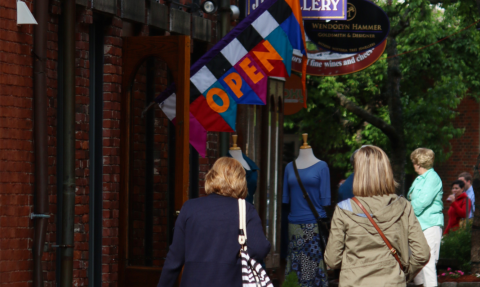Tourist Destinations – Have you Got What it Takes to be One?

At last, I am in the heart of the Whites – the true North Country!” exclaims a vacationer as they step out of their car to view Mount Washington from a busy rest stop alongside of New Hampshire’s Route 16 in North Conway. Like many visitors, they assume that the Pinkham Notch Visitor Center at the Base of the Mount Washington Auto Road is the end of the road, New Hampshire’s northernmost destination. After all, what is north of the White Mountains? Truth be told, there’s a lot of beautiful country to the north of the White Mountain National Forest. There just isn’t a large amount of infrastructure such as hotels, gear shops, outlet malls, or restaurants to support a lot of tourists. That seems to suit some folks just fine.
In fact, the state’s tourism statistics indicate that there is a growing cadre of hearty fishermen, hikers, snowmobilers, skiers, and hunters that frequent the country which lies to north of the White Mountain National Forest – the so called ‘Great North Woods’. One member of the Androscoggin Valley Economic Recovery Corporation (AVER), a collaboration of local governments, communities, organizations, and businesses to bolster economic development in the Berlin/Gorham area, claims that several thousand snowmobilers pass through the Berlin and Gorham on any given January or February weekend. Moreover, there are several restaurants and lodging facilities in the region that are frequented by those wanting to brave the woods. Amenities for those who want to be pampered in style can even be found, as anyone that has stayed at the Balsams Hotel in Dixville Notch will tell you.
However, towns such as Gorham, Berlin, Errol, Lancaster, and Colebrook would like to better position themselves to cash in on the tourist economy, particularly in light of the declining pulp and paper industry which has historically dominated the Great North Woods employment. With mill closings and downsizing, folks are scrambling for an alternative income. Could tourism be the answer? It certainly has been part of the answer for communities on the southern cusp of the White Mountain National Forest.
Not so fast! The great pundit who once said “if you build it, they will come,” was perhaps a bit misinformed. Just because you may have the finest landscape, a quintessential New England town, and lots of recreational opportunities, it doesn’t mean that you are destined to be a great destination. Likewise, even the most comprehensive tourist infrastructure does not guarantee that tourists will flock your way. The question is, how do you know if you’ve got what it takes to be a tourist destination?
First, before any community or a region even begins to project its potential as a tourist destination, consider that there are a few unchangeable factors that affect the growth of tourism, such as location and physical landscape. Tourists invariably travel to see extraordinary sites or partake in extraordinary activities. So, if you don’t have anything outstanding to offer, then it is pretty hard to generate a tourism industry.
Along a similar vein, location is a key attribute! Ask yourself, are many people in the Northeast willing to drive to your potential destination? It helps if your potential destination is within 150 miles of a major metropolitan center. After all, research indicates that the average range that weekend travelers are willing to travel is somewhere between 100 and 150 miles. So, if the major population centers where visitors will come from are not within 150 miles, then it’s going to be hard to draw a steady number of visitors.
If you have outstanding scenery to offer and a large population to draw from, the next step is to plan. Planning enables local residents to influence and benefit from the growth of a tourism industry. By creating a planning committee that involves citizens, a collective vision of what the community should be like can be formed. Henceforth, all decisions pertaining to tourism development should agree with this collective vision. It is the road map for the community’s future.
An important step of the planning process is to identify facilities, services, and attributes that the community has to attract visitors. In other words, do you have hotels, restaurants, food stores, equipment rental shops, guided tours, and other amenities that tourists typically look for? If vital tourist services or facilities do not exist, the planning committee must determine how they could be developed in a manner acceptable to the community.
If you pass the above tests, you may indeed be ready to start developing a tourism industry. The ultimate goal of tourism development is to draw tourist dollars from visitors. Whether your community will benefit from tourism depends largely on the ability of local residents to identify the potential and effectively plan to meet tourists’ needs.

